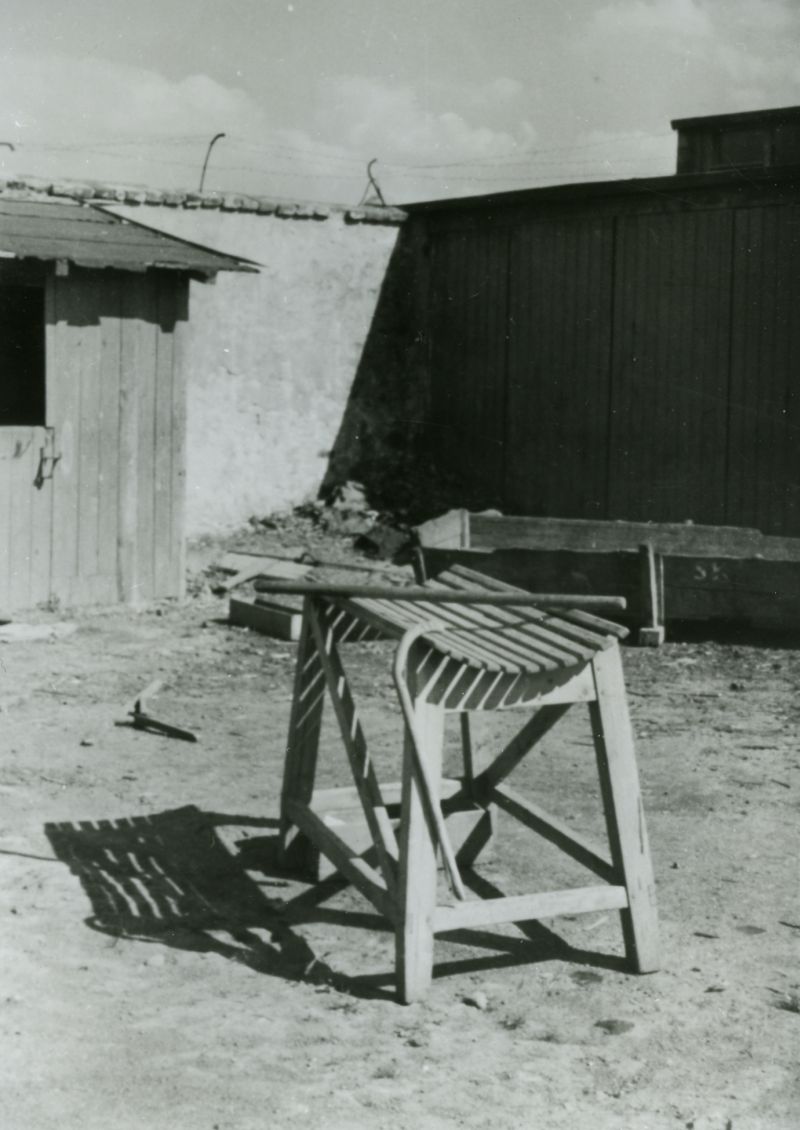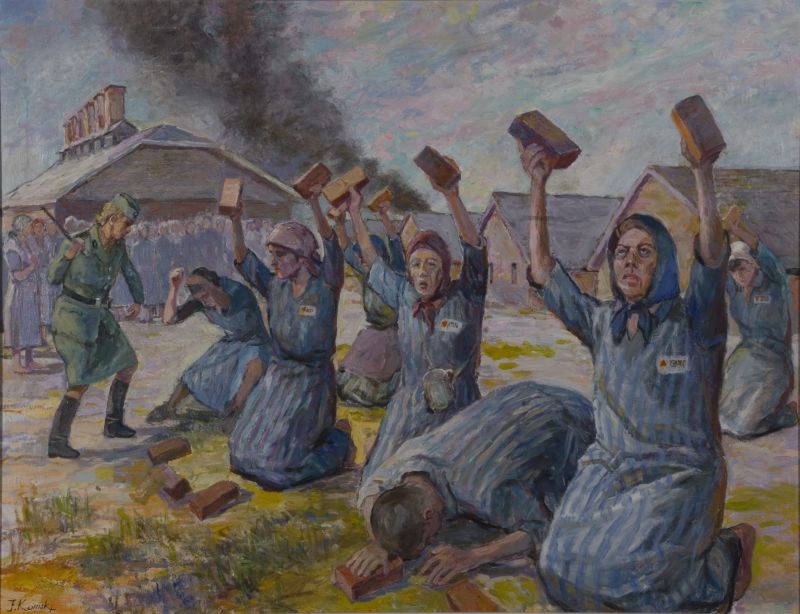Harsh and brutal punishments implemented in the camp had a significant impact on condition and mortality of female prisoners. The most common punishment was spontaneous beating, without any official procedure. Theoretically a female prisoner shall be punished if she: doesn’t’ follow the camp’s regulations, shows insubordination or breaks in any way rules imposed by the camp authorities. In such cases SS-man, SS-female guard or prisoner functionary submitted a penal report. As a result, the camp commander or supervisor issued a written penal order indicating the kind of punishment. Mostly it was whipping performed in public on a special device for beating called “goat”. Punishment of 15 whips received Janina Lach-Kamińska for stealing of 15 potatoes from the field, 25 whips received female prisoners from farm command for complaining about kapo, who stole their soup, 25 whips received also Sztubowa (room leader) from the block 23- she failed to watch over a Dutch Jewish woman, who hide in straw mattress and avoided roll call.




